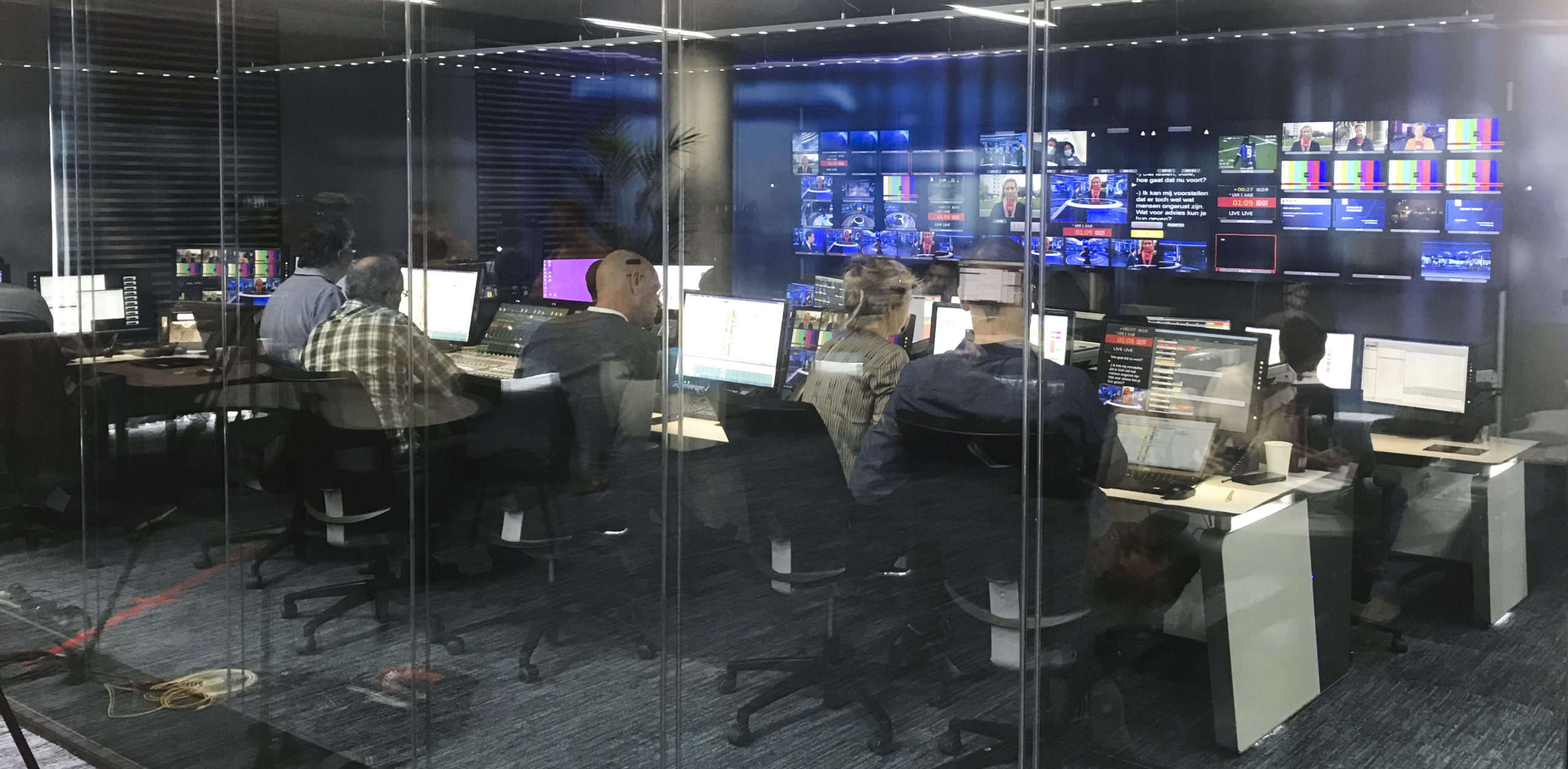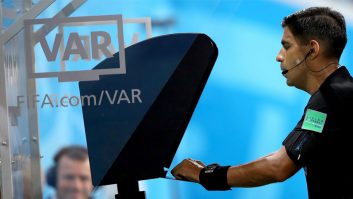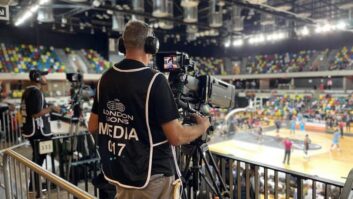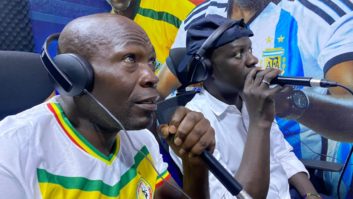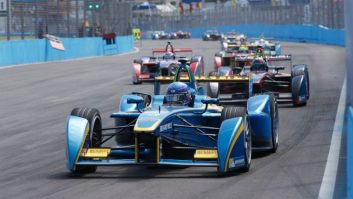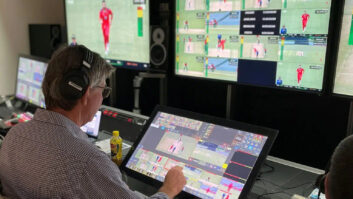Of the most-cited reasons for migrating towards ST2110-based IP remote production, sheer necessity takes top spot. In DPG Media’s case, completing two news production control rooms in one town only months before transferring all news activities to another sparked the idea of full-time remote operation. Rudi Antonissen, sales manager Benelux at Lawo explains how the equipment in Antwerp is used as a sophisticated remote control for the processing tools in Vilvoorde.
Moving without relocating
The journey started in 2016 when Belgium’s DPG Media decided to build two new control rooms in Vilvoorde (near Brussels), involving a MADI-based audio and an SDI-based video system for its flagship TV station, VTM.
In early 2019, the news desks of all newspapers owned and the registered office were transferred to Antwerp. The newsrooms of the TV and radio stations (Qmusic, Joe, Willy) were to move, too, to leverage the synergies expected from bundling all news activities at the News City building in Antwerp.
Replacing the infrastructure in Vilvoorde (completed only recently) was not an option. Besides, DPG Media’s Entertainment arm was to remain in Vilvoorde anyway. And there was no room in Antwerp for a full-blown data centre…
IP = Investment Protection?
The taskforce in charge of solving the ‘two locations, one system’ riddle was headed by Chris Verhoeven, who knew about the possibilities afforded by audio and video over IP, and the resulting remote production benefits.
Given the built-in audio-over-WAN-IP capability of the audio equipment they already owned, DPG Media started looking for an equally potent video-over-IP solution. The intention was to operate DPG Media’s video infrastructure, hosted in Vilvoorde, from Antwerp.
This called for gateway devices that translate SDI video signals into IP data packets, and back for further processing where necessary. The news project centred on a 40km long connection between Antwerp, where the ‘remote controls’ (mixers, graphics stations, etc) for the news division were to be hosted, and the equipment room in Vilvoorde. The news studio in Antwerp went live on February 3rd, 2020.
Instant remote
For the TV news shows produced in Antwerp, all multiviewer mosaics are created at the data centre in Vilvoorde and sent back to Antwerp over a 400Gbps dark-fibre IP line.
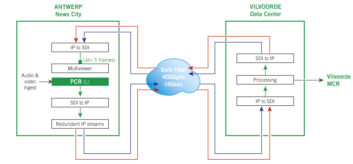
For news telecasts, Antwerp remotely takes over one of the two control rooms in Vilvoorde and leverages its processing hardware. All processing happens in Vilvoorde, which sends multiviewer and processed audio signals back to Antwerp for monitoring purposes. Concurrently, the final programme signals are handed over to the MCR, which is also in Vilvoorde.
- Riot Games chooses Blackbird for remote video production
- The new definition of remote production
- Video: Sunset+Vine and BT Sport pioneering the remote production revolution?
Need for speed
No video compression is used between the two cities to achieve an immediate response: pressing a button in Antwerp not only triggers the intended action right away (in Vilvoorde), but also allows for the result to be visible near-instantly (in Antwerp).
Breaking-news automation
The breaking-news set in Antwerp is a highly intuitive, self operated set-up developed by DPG Media’s technical innovations team. Via a custom-built touchscreen panel, presenters can establish all required connections, retrieve content, and go live within seconds.
Four fully automatic PTZ cameras transmit SDI signals to a dedicated V__matrix Silent Frame, which converts them to IP and transports the resulting streams to Vilvoorde. Two intelligent functions help the host to manage most production aspects: automated framing combined with a cube system, and an automated control function based on audio level thresholds to open and close microphone channels.
The underlying routine was written by DPG Media programmers in the Lua scripting language. It communicates with the mixing console via an EmberBridge script that sends Ember+ commands for audio channel selection on the console. Camera cutting is based on which audio channel is activated. The breaking-news set furthermore includes automated lighting, graphics and a Vizrt engine. This custom-built automation system is linked to the IP broadcast control system for easy inclusion of additional sources.
Network
DPG Media uses a single, non-blocking network spread over two cities. In effect, the leaf switches in Antwerp are connected to the spine switches in Vilvoorde using a 40km long cable. Audio latency is only one or two milliseconds. Given the video’s longer delay, lip sync is performed on the audio production console, which allows DPG Media to keep video and audio information separate end-to-end. Audio processing is handled by an ultra-high density IP DSP engine in Vilvoorde whose 1024 DSP channels are shared among three consoles – one of them in Antwerp – and one virtual mixer.
Entertainment project
After learning about the multiviewer, audio embedding/de-embedding and audio shuffling functions as well as the format conversion options of the proposed processing blades, DPG Media issued a second order for its new entertainment production gallery in Vilvoorde and a so-called ‘remote rack’.
The processing and gateway functions are provided by ‘stationary’ V__matrix units at DPG Media’s data centre. The equipment for the studio set (gateways for SDI video cameras, IP I/O edge devices for audio ingestion), on the other hand, are mounted into 19” flightcases.
Despite their internal moniker, these remote racks are currently only used on-site. But they could be carried to external studios or venues for a mobile remote production scenario. The new entertainment section in Vilvoorde came online in late October 2019.
Broadcast control: boxing
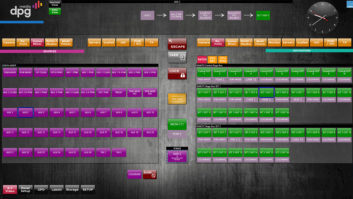
DPG Media’s entertainment and news divisions use separate IP broadcast control systems to be able to perform maintenance tasks without impacting the other division. The broadcast control system for the Entertainment division provides an ‘engineering view’ (see image, left) that shows the video signal path through all relevant blades, because gateway functionality and VC-2 compression are handled by separate blades, and all stages needed to be visible.
Early adoption works
DPG Media were early adopters, eager to embrace cutting-edge IP technology. The result is spectacular: full-time remote resource sharing between two locations works a treat!
Rudi Antonissen is sales manager Benelux, at Lawo.
